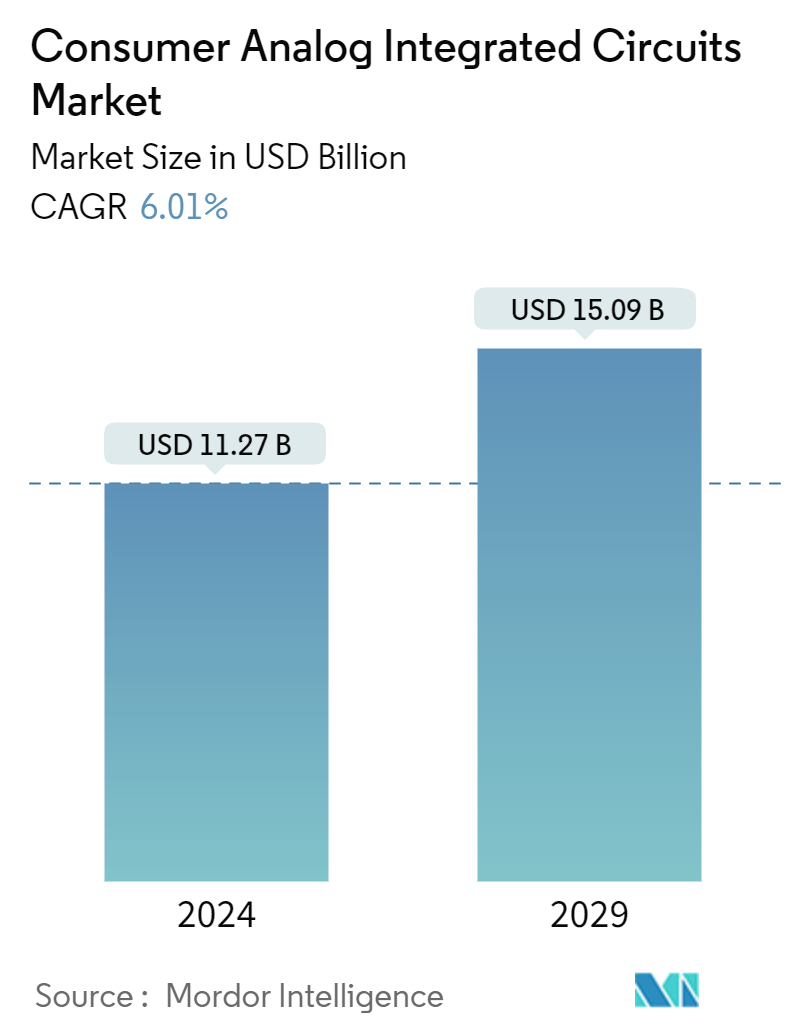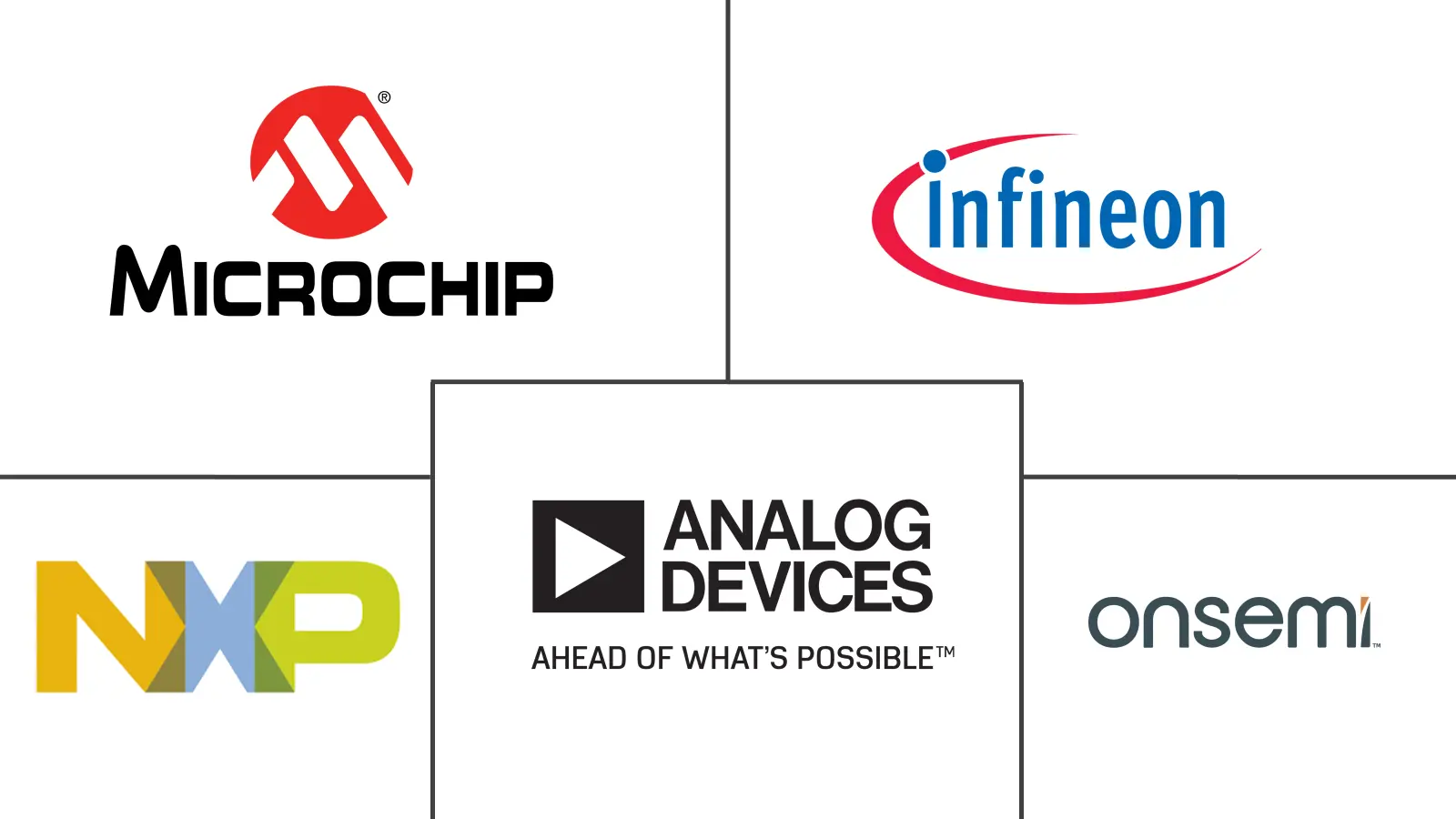Market Size of Consumer Analog Integrated Circuits Industry

| Study Period | 2019 - 2029 |
| Market Size (2024) | USD 11.27 Billion |
| Market Size (2029) | USD 15.09 Billion |
| CAGR (2024 - 2029) | 6.01 % |
| Fastest Growing Market | Asia Pacific |
| Largest Market | Asia Pacific |
Major Players
*Disclaimer: Major Players sorted in no particular order |
Consumer Analog Integrated Circuits Market Analysis
The Consumer Analog Integrated Circuits Market size is estimated at USD 11.27 billion in 2024, and is expected to reach USD 15.09 billion by 2029, growing at a CAGR of 6.01% during the forecast period (2024-2029).
- Analog integrated circuits deal with the design and analysis of modem analog circuits using integrated bipolar and field-effect transistor technologies. The analog integrated circuit (IC) operates over an entire range of continuous signal amplitude values, which are used for various functions that require variable output signals for radiofrequency and audio-frequency amplifiers.
- The proliferation of consumer electronics is driving the growth of analog integrated circuits in the consumer electronics industry. The increasing demand for consumer electronics, particularly smartphones, tablets, and wearables, is a significant driver of the analog IC market. As these devices become more prevalent, the need for efficient power management and signal processing capabilities provided by analog IC is surging.
- The increasing adoption of smartphones, feature phones, and tablets is driving the market’s growth. Analog ICs are utilized in various applications, including 3G and 4G radio base stations and batteries for portable devices. RFICs, or radio frequency integrated circuits, typically operate within the 3 kHz to 2.4 GHz frequency range, with some circuits being developed to function at approximately 1 THz (1 trillion hertz). These circuits are essential for cell phones and numerous wireless devices. As development continues, the analog IC market in this segment is expected to expand.
- The ongoing technological advancements in consumer electronics are enhancing the functionality and performance of devices. Innovations in areas such as audio and video processing, battery management, and sensor integration are heavily reliant on analog ICs. For instance, analog ICs are crucial for optimizing battery life and energy efficiency in portable devices.
- The integration of analog IP onto a complex silicon chip is a time-consuming process that is exacerbated by the variable quality of currently available analog IP products. Analog circuits are sensitive to their on-chip surroundings, so issues during integration and testing can lead to reliability problems during the manufacture and mass production of such chips. Finally, waiting until the end of analog IP delivery can both slow down chip planning work and mean that critical customer feedback is not available until it is too late.
- Geopolitical challenges, including the Russian invasion of Ukraine, competition between the United States and China, elections, and the war in Israel, significantly impact the global supply chain, especially in the case of critical raw materials vital for traditional industries, defense, high-tech sectors, aerospace, and green energy. The Russia-Ukraine war and economic slowdown caused significant disruptions in the semiconductor industry. The increased inflation and interest rates reduced consumer spending, hampered the industry’s demand, and led to slow growth in the analog integrated circuit market.

